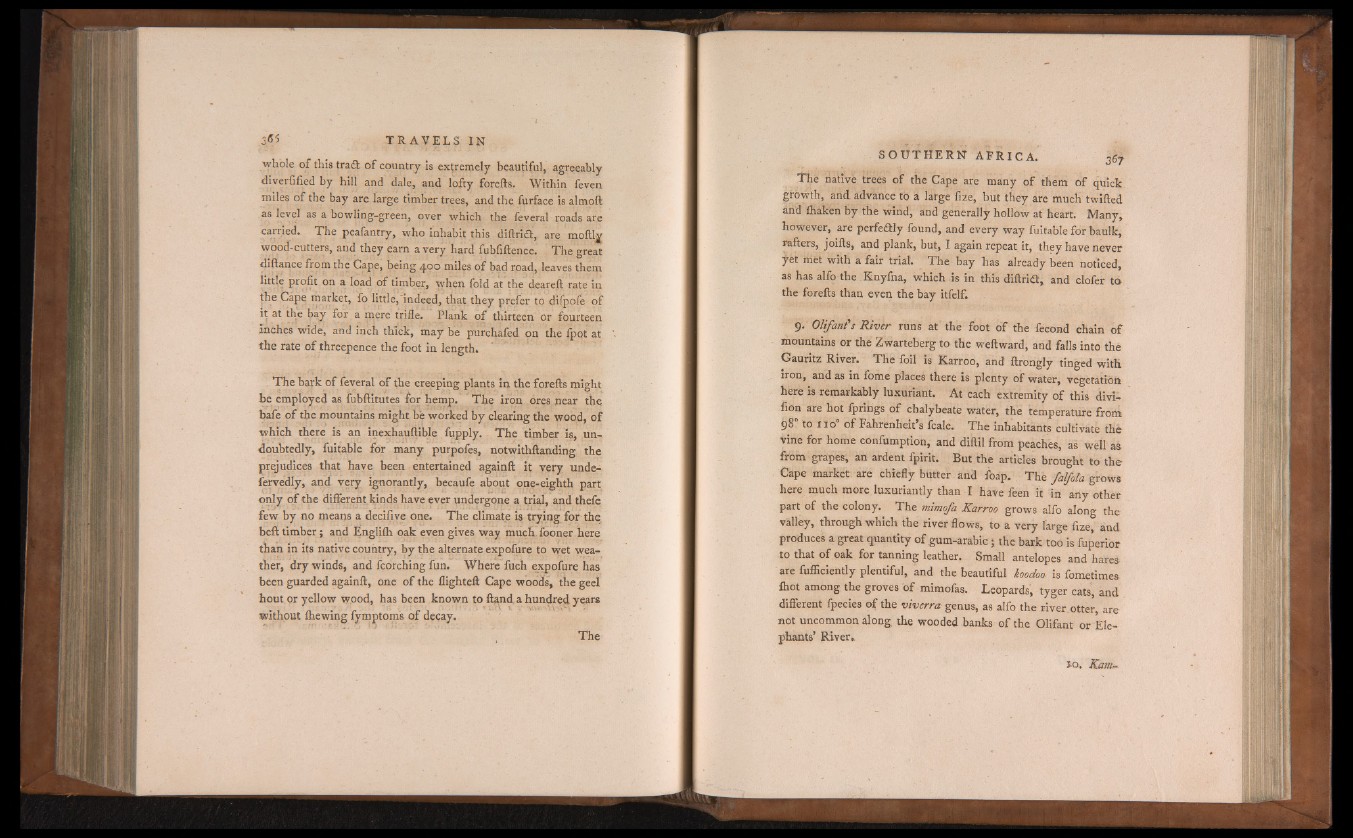
whole of this trad of country is extremely beautiful, agreeably
diverfified by hill and dale, and lofty forefts. Within feven
miles of the bay are large timber trees, and the furface is almoft
as level as a bowling-green, over which the feveral roads are
carried. The peafantry, who inhabit this diftrid, are moftly
wood-cutters, and they earn a very hard fubfiftence. The great
diftance from the Cape, being 400 miles of bad road, leaves them
little profit on a load of timber, when fold at the deareft rate in
the Cape market, fo little,"indeed, that they prefer to dilpofe of
it at the bay for a mere trifle. Plank of thirteen or fourteen
Inches wide, and inch thick, may be purchafed on the fpot at
the rate of threepence the foot in length. '
The bark of feveral of the creeping plants in the forefts might
be employed as iubftitutes for hemp. The iron ores near the
bafe of the mountains might be worked by clearing the wood, of
which there is an inexhauftible fupply. The timber is, undoubtedly,
fuitable for many purpofes, notwithftanding the
prejudices that have been entertained againft it very unde-
fervedly, and very ignorantly, becaufe about one-eighth part
only of the different kinds have ever undergone a trial, and thefe
few by no means a decifive one. The climate is trying for the
beft timber; and Englifti oak even gives way much fooner here
than in its native country, by the alternate expofure to wet weather,
dry winds, and fcorching fun. Where fuch expofure has
been guarded againft, one of the flighted: Cape woods, the geel
hout or yellow wood, has been known to Hand a hundred, years
without fhewing fymptoms of decay.
The
The native trees of the Cape are many of them of quick
growth, and advance to à large fize, but they are much twilled
and lhaken by the wind, and generally hollow at heart. Many,
however, are perfectly found, and every way fuitable for baulk,
rafters, joifts, and plank, but, I again repeat it, they have never
jtet met with a fair trial. The bay has already been noticed,
as has alfo the KLnyfna, which is in this diftria, and clofer ta
the forefts than even the bay itfelf.
9. Olifant’s River runs at the foot of the feeond chain of
mountains or the Zwarteberg to the weftward, and falls into the
Gauritz River. The foil is Karroo, and ftrongly tinged with
iron, and as in fome places there is plenty of water, vegetation
here is remarkably luxuriant. At each extremity of this divi-
fion are hot ipritigs of chalybeate water, the temperature from
98 to 110 of Fahrenheit s leale. The inhabitants cultivate thè
vine for home confumption, and diftil from peaches, as well as
from grapes, an ardent fpirit. But the articles brought to the
Cape market are chiefly butter and foap. The falfola grows
here much more luxuriantly than I have feen it in any other
part of the colony. The mimofa Karroo grows alfo along the
valley, through which the river flows, to a very large fize, and
produces a great quantity of gum-arabic ; the bark too is fuperior
to that of oak for tanning leather. Small antelopes and hares
are fufficiently plentiful, and the beautiful koodoo, is fometimes
fliot among the groves of mimofas. Leopards, tyger cats, and
different fpecies of the viverra genus, as alfo the river.otter, are
not uncommon along, the wooded banks of the Olifant or Elephants’
Rivers
o . Kant